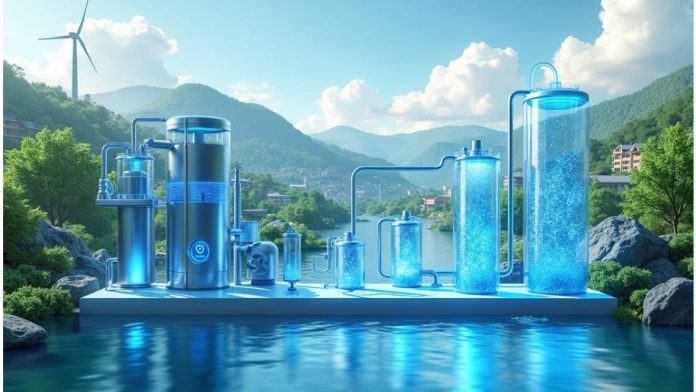Imagine waking up every morning knowing the water you drink is clean, safe, and readily available—no boiling, no filters, no second thoughts. Sounds like a basic right, doesn’t it? And yet, over 2 billion people globally still lack access to safely managed drinking water.
But here’s the silver lining: technology is stepping up, big time.
Welcome to the world of water purification technologies—where science, innovation, and compassion join forces to make clean water not just a luxury, but a global standard. Whether you’re a student, a homeowner, or someone curious about making a real difference, this guide will take you on a journey through the fascinating world of modern water purification, and how it’s transforming lives across the globe.
Why Water Purification Matters More Than Ever
Let’s face it—water is life. We need it to drink, cook, clean, grow food, and maintain hygiene. Yet pollution, climate change, and rapid urbanization are threatening our freshwater resources like never before.
According to the WHO, unsafe water leads to diseases like cholera, dysentery, and typhoid, especially in developing countries. Even in modern urban centers, water contamination through old infrastructure or industrial discharge is a growing concern.
This is where water purification technologies come in—not just as a stop-gap measure, but as a sustainable, scalable solution for the future.
What is Water Purification, Exactly?
At its core, water purification is the process of removing unwanted chemicals, biological contaminants, suspended solids, and gases from water to make it safe for human use.
From ancient boiling methods to today’s high-tech nano-membranes, the journey of purification is a powerful example of human ingenuity.
Breakthrough Water Purification Technologies You Should Know About
Let’s explore some of the leading-edge technologies revolutionizing water purification today:
1. Reverse Osmosis (RO)
One of the most widely used methods in both homes and industries. RO systems force water through a semi-permeable membrane that filters out 99% of contaminants, including heavy metals, salts, and microbes.
✅ Best for: Removing dissolved solids, heavy metals, and salts
⚠️ Tip: Look for RO systems with remineralizers to restore essential minerals.
2. Ultraviolet (UV) Purification
UV light destroys bacteria, viruses, and other pathogens by damaging their DNA—without the use of chemicals.
✅ Best for: Killing microorganisms
⚠️ Tip: Works best with already filtered (clear) water, not murky or muddy water.
3. Activated Carbon Filtration
Activated carbon filters use adsorption to remove chlorine, bad odors, organic compounds, and some heavy metals.
✅ Best for: Improving taste, odor, and clarity
⚠️ Tip: Replace filters regularly to ensure effectiveness.
4. Nanotechnology-Based Filters
These filters use nanomaterials to trap contaminants at a microscopic level, sometimes even without electricity. One notable example is graphene oxide membranes, which can remove salts from seawater efficiently.
✅ Best for: Remote areas with limited power
⚠️ Tip: Research product certifications before purchasing nanotech filters.
5. Solar Water Disinfection (SODIS)
A low-cost method where sunlight is used to purify water in clear plastic bottles. Ideal for emergencies or areas without electricity.
✅ Best for: Rural, low-resource communities
⚠️ Tip: Ensure bottles are transparent and UV-resistant for best results.
Real-World Innovations Making a Splash
Here are a few inspiring projects showing just how powerful water purification technologies can be:
-
LifeStraw: A portable straw filter that purifies water on-the-go, used by hikers and in humanitarian aid.
-
Drinkable Book by WATERisLIFE: Each page of this book filters bacteria and costs just a few cents.
-
Slingshot by Dean Kamen: A revolutionary vapor-compression distiller that turns any dirty water—even sewage—into drinkable water using minimal energy.
These aren’t just cool inventions—they’re saving lives.
How You Can Make a Difference Today
Even if you’re not an engineer or scientist, you can contribute to water purification efforts in practical, meaningful ways.
✅ Choose Eco-Friendly Filters
Support companies offering sustainable filtration options—reusable cartridges, biodegradable components, etc.
✅ Reduce Water Contamination at Home
Don’t dump chemicals, paint, or pharmaceuticals down the drain. Use environmentally safe cleaning products.
✅ Educate and Advocate
Host workshops or share resources about clean water on social media. Many people don’t realize their local water might need more purification than they assume.
✅ Donate or Volunteer
Organizations like charity: water, Water.org, and Planet Water Foundation use donations to install purification systems in communities that need them most.
Frequently Asked Questions (FAQs)
1. Is bottled water safer than tap water?
Not necessarily. Tap water in many countries is strictly regulated and safe. Bottled water may come from the same source but costs significantly more and creates plastic waste.
2. How often should I change my water filter?
It depends on the type of filter and usage. Carbon filters should be replaced every 2–6 months, while RO membranes can last up to 2 years. Always follow the manufacturer’s guidelines.
3. Can I purify river or rainwater at home?
Yes, but you’ll need a multi-stage system—like sediment filtering followed by UV or RO purification—to make it completely safe.
4. What’s the best water purification method for traveling?
Portable options like UV pens (e.g., SteriPEN) or LifeStraw bottles are great for backpackers and travelers in remote areas.
5. Are home water testing kits reliable?
They’re good for a quick check but can miss trace contaminants. For full analysis, use a certified lab to test your home water.
Conclusion
Clean water isn’t a privilege—it’s a human right. And thanks to the evolution of water purification technologies, that right is becoming more accessible every day. From smart filtration systems in your kitchen to solar disinfection kits in remote villages, we’re witnessing a revolution in how we view and value water.
The next time you take a sip of water, think about the journey it’s taken—and how we all have a role in keeping that journey clean, safe, and sustainable.
Have you used any innovative water purification methods at home or while traveling? What tips or technologies have worked best for you?
Share your experiences, suggestions, or even your local water challenges in the comments below. Let’s learn and grow together—one drop at a time. 💧

